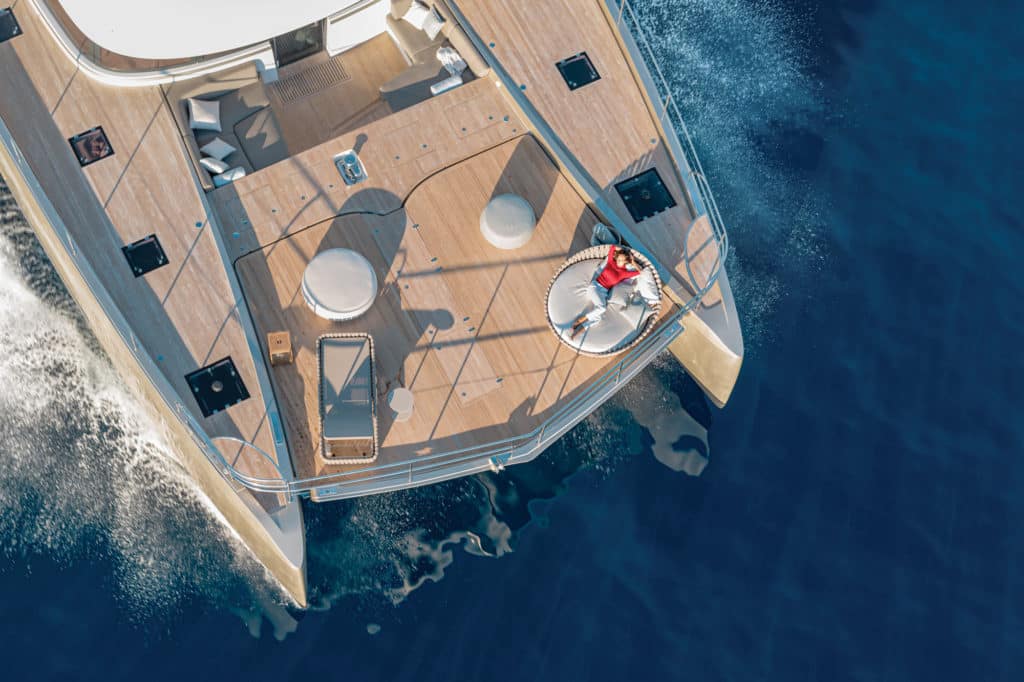
Power catamarans have always had hardcore fans, and we could all argue for the umpteenth time about whether powercats are better than monohulls. Yawn. The truth is, there’s a relatively small but dedicated group of powercat lovers who will never agree with the monohull crowd. Trying to persuade one or the other to change their minds is akin to locking Rush Limbaugh and Rachel Maddow in a room and saying, “Go.”
A more interesting debate is about what, in any particular catamaran’s design, triggers such dedication. I say particular because one of the great judgmental errors naysayers make is lumping all multihull boats into the same category. Nobody would say all monohulls are alike, yet powercats are often painted with an exceedingly broad brush and then dismissed or embraced on the whole.
Truth be told, whether you’re considering a 40-foot center-console cat with quadruple outboards or an 80-foot cat cruiser with the elegance of a Trumpy, the ability of a designer to take advantage of the twin-hull platform is often the key to the design’s success—or lack thereof.
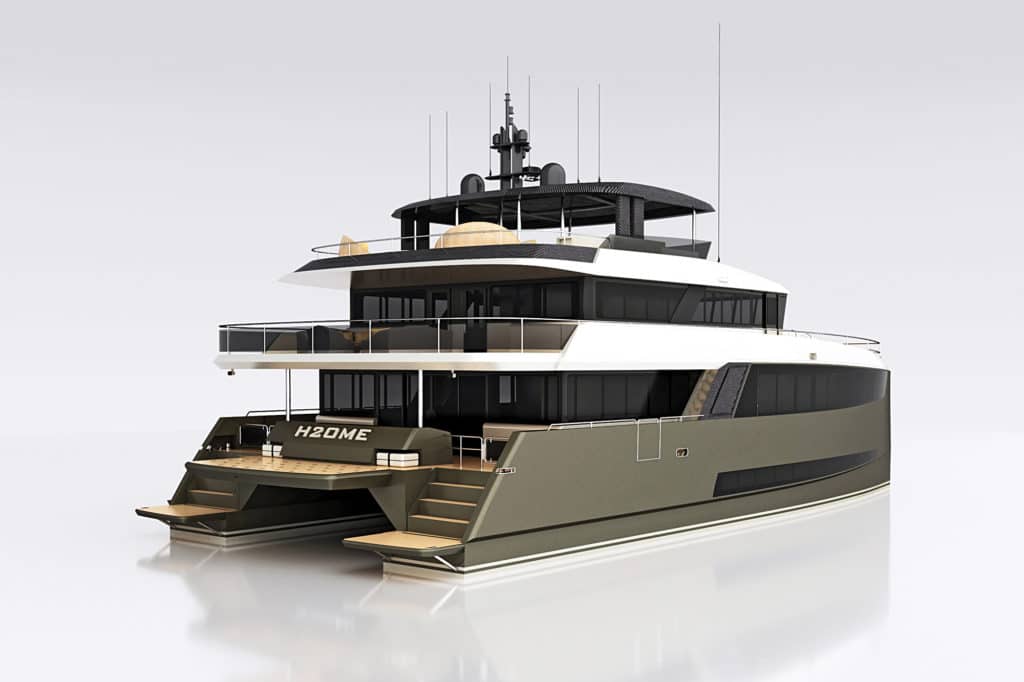
Amasea Yachts 84
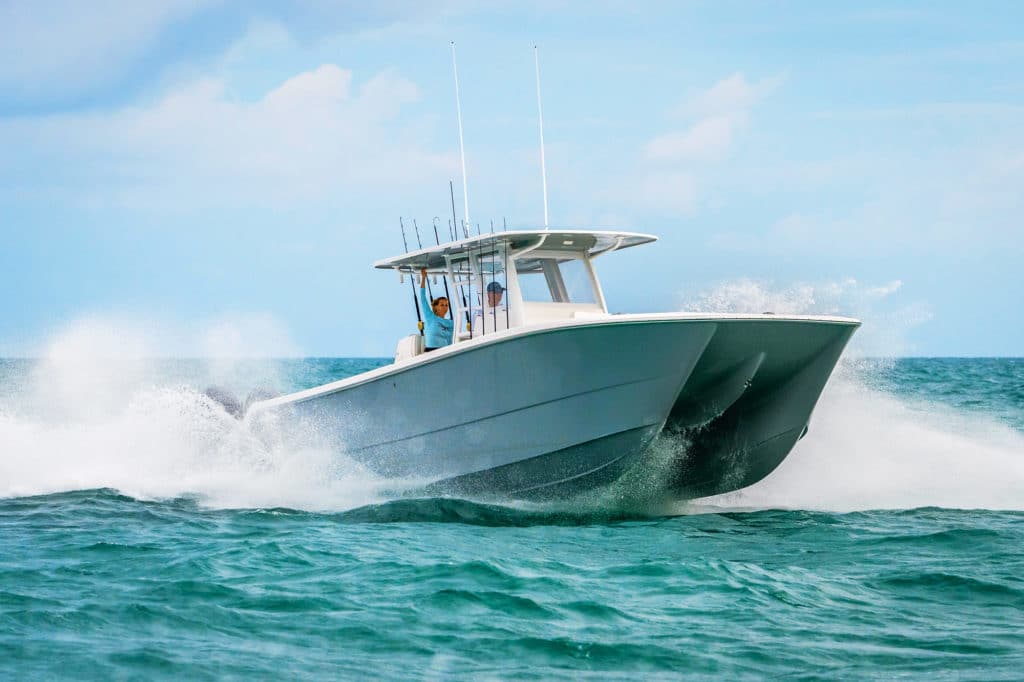
Invincible 35
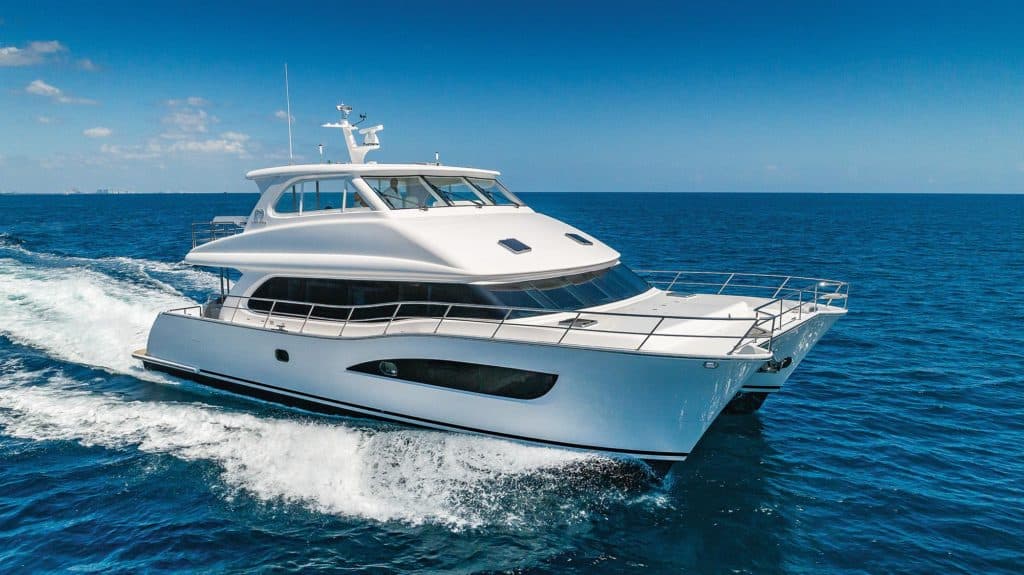
Horizon PC60
“The design work on a cat is far more involved than on a monohull,” says Larry Graf, who started off his design career by creating Glacier Bay powercats and, today, designs and builds Aspen Power Catamarans. “With a monohull, you design from the centerline out, then mirror it on the computer and pow—you have a full hull. A typical monohull hull can be done in three to five days. But for a cat, the best shapes are often asymmetric, so each hull has two halves that are not the same.”
And the hull is just the beginning of a cat’s story. Is it easier to design an interior that fits into one hull or into two separate hulls plus a center deck level? That cats have more complexity on the inside is a no-brainer.
However, having the two separate hulls also provides advantages. One is privacy on a level that can’t be matched in any monohull, if a cat’s designer works with the shape of the boat.
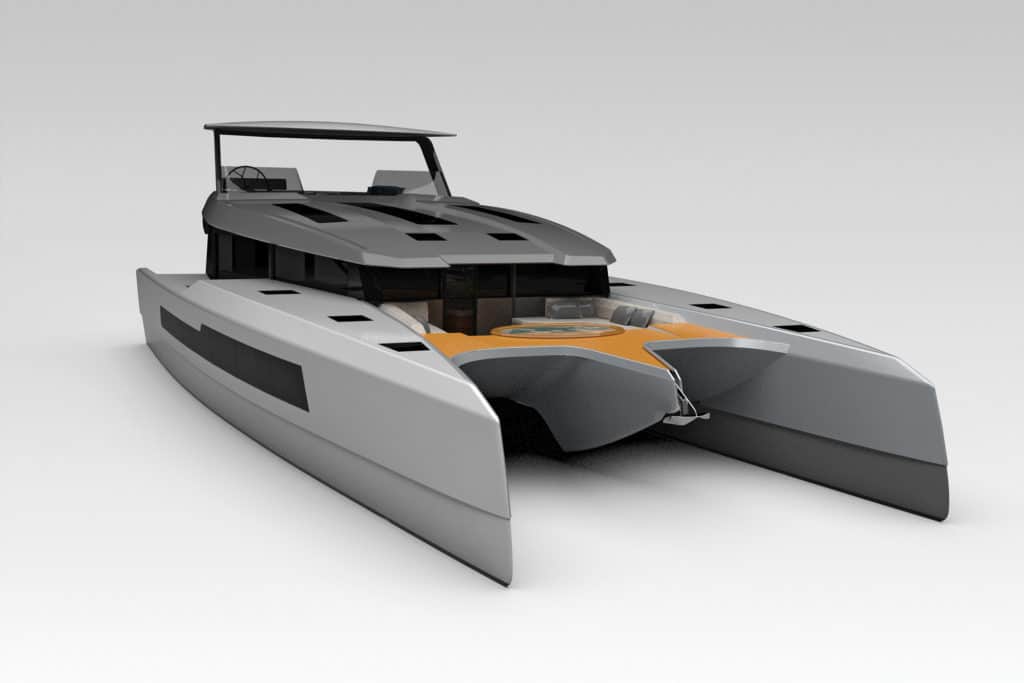
McConaghy 59p
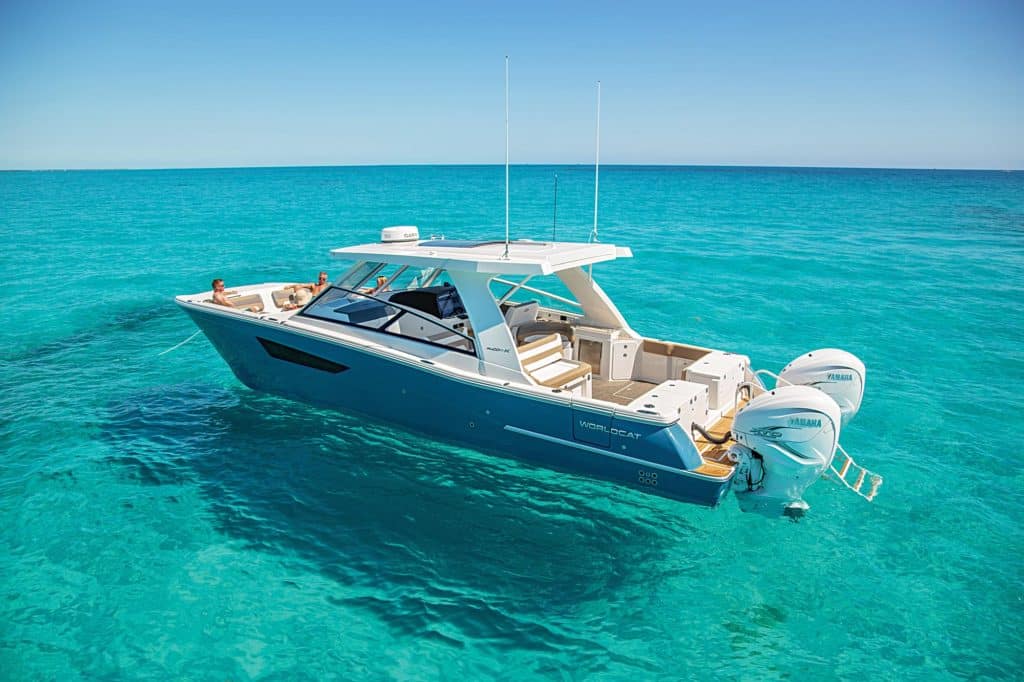
World Cat 400DC-X
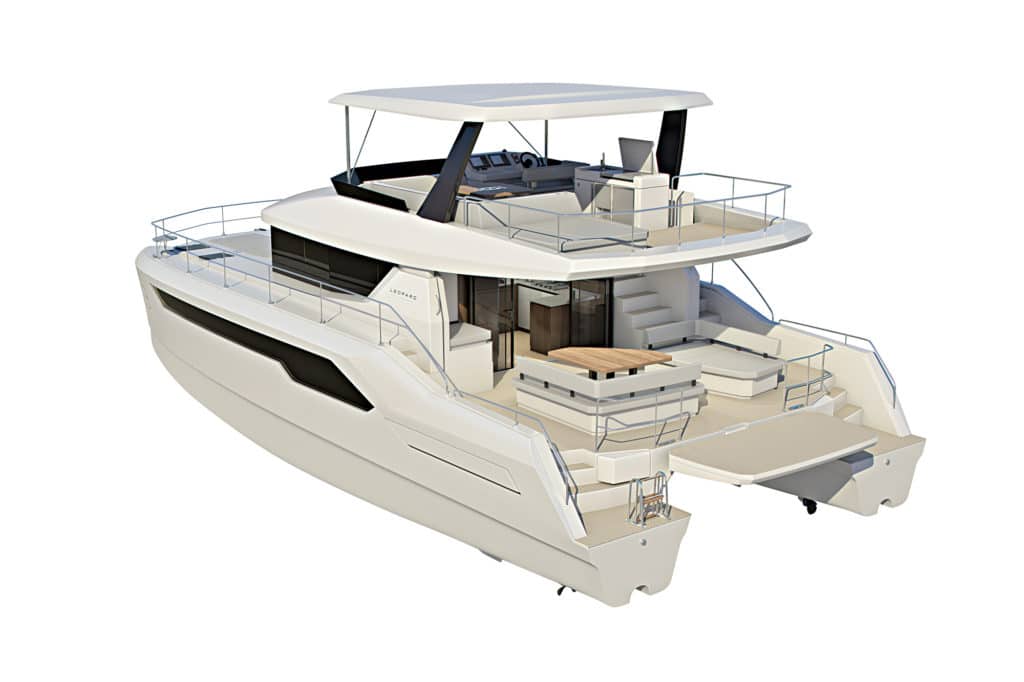
Leopard 53
The key to harnessing this privacy advantage is the ability to separate staterooms not just with thin bulkheads but instead with entire hulls, or at the very least with head compartments and companionways. In part, this ability contributes to the popularity of powercats in the charter market.
Lex Raas—president of charter and special initiatives at MarineMax, which launched the Aquila line for charter in 2012 with the Sino Eagle Group—says the Aquila 48 illustrates how privacy can be done right on a catamaran.
“The privacy advantage specifically is that the port hull is a full owner’s cabin,” he says. “There are no shared bulkheads. And on the starboard-side, there are two absolutely equal cabins with equal heads and showers between them. You can take two couples with you, and nobody feels that they’re getting the short end of the stick.”
The elimination of shared bulkheads increases privacy quite a bit on that Aquila, but examples become even more stark as you consider larger yachts. One of Sunreef’s newest offerings, the 80 Sunreef Power, for example, can have six staterooms—all separated by full heads or companionways, with no two staterooms sharing a common bulkhead.
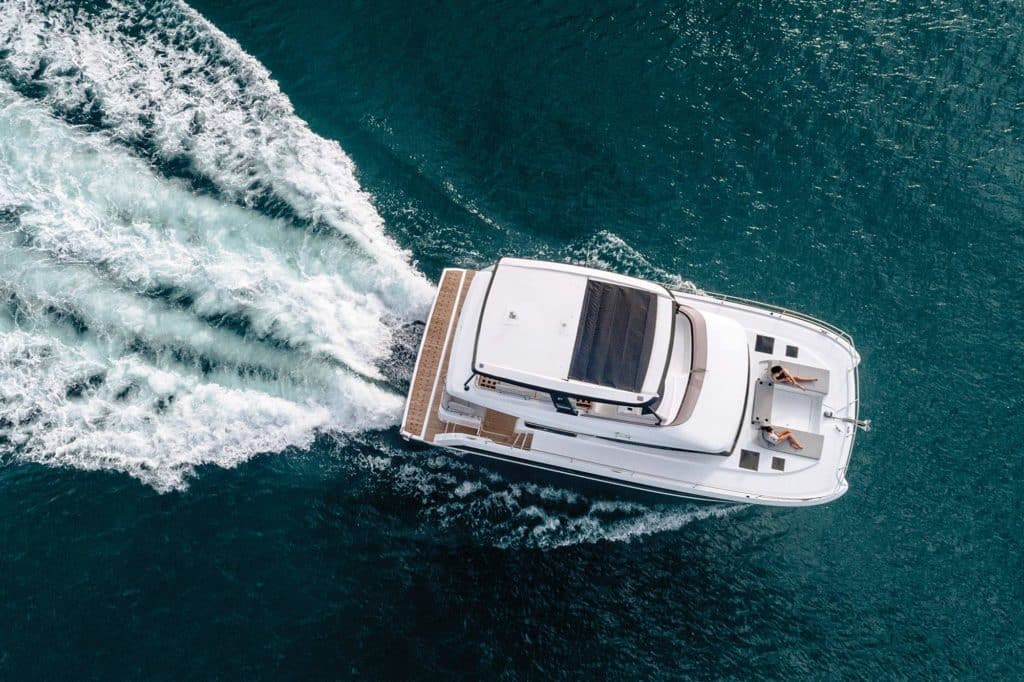
Fountaine Pajot MY 40
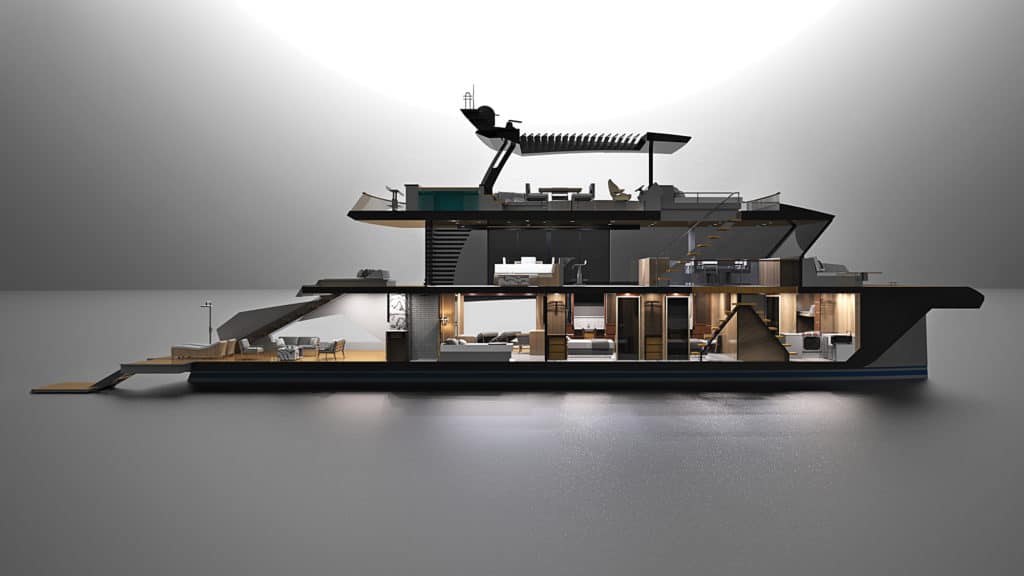
Corona 85
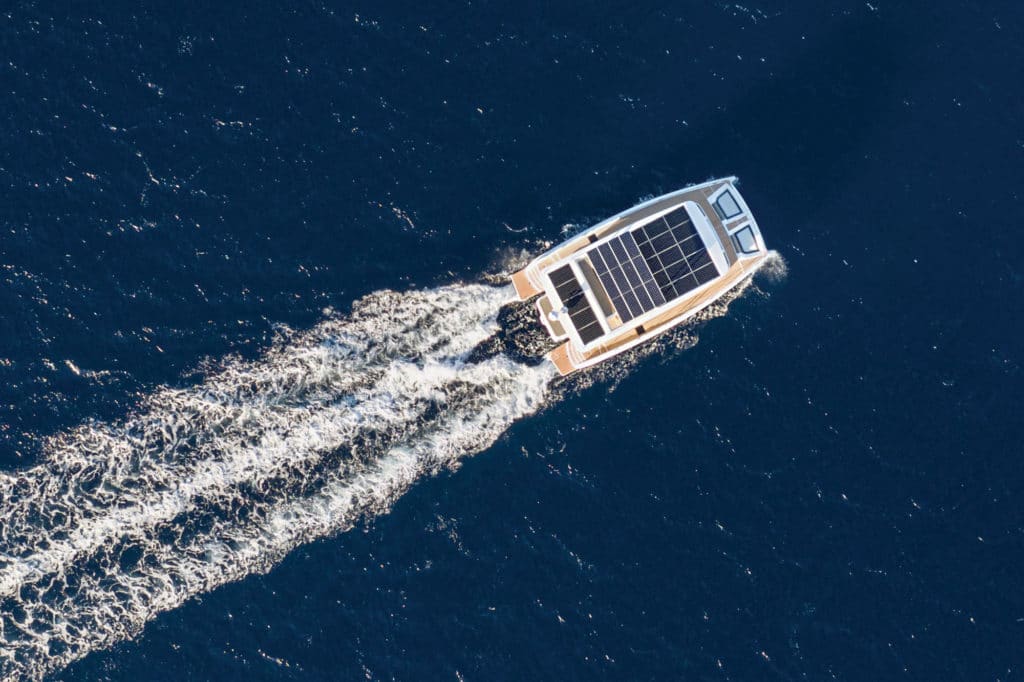
Silent-Yachts 55
The ability to have more staterooms that are more private is in large part a function of beam on a cat, designers say.
“Beam is gained for the whole length of the boat, and the cross-deck provides a huge space,” says Mathias Maurios, a naval architect at VPLP Design in Paris, a firm known for designing twin-hulled yachts. “And while, yes, the individual hulls are narrower than a single monohull body, on the whole, usable space is larger than with a monohull. The width allows for more of the valuable interior and deck space.”
Maurios points to the Lagoon Seventy 8 as an example. “The staterooms are the size of the cabins in a much larger motoryacht,” he says.
The other big advantages many cats can claim relate to seakeeping, speed and efficiency. Again, no two powercats are alike, but a close look at specific models is illuminating. As we reported in Yachting’s review of the Lagoon Seventy 8, for example, at a 10-knot cruise, the boat has 4,000 nautical-mile transatlantic range—a boast that few engine-driven yachts of the same length overall can make. Smaller cats can also have extreme ranges for their size; consider that the Fountaine Pajot MY 44 can reportedly cruise more than 1,000 nautical miles between pit stops.
“Speed, stability and comfort are the prime words illustrating catamarans,” Maurios says, “and we’ve always believed that multihulls are ideal.”
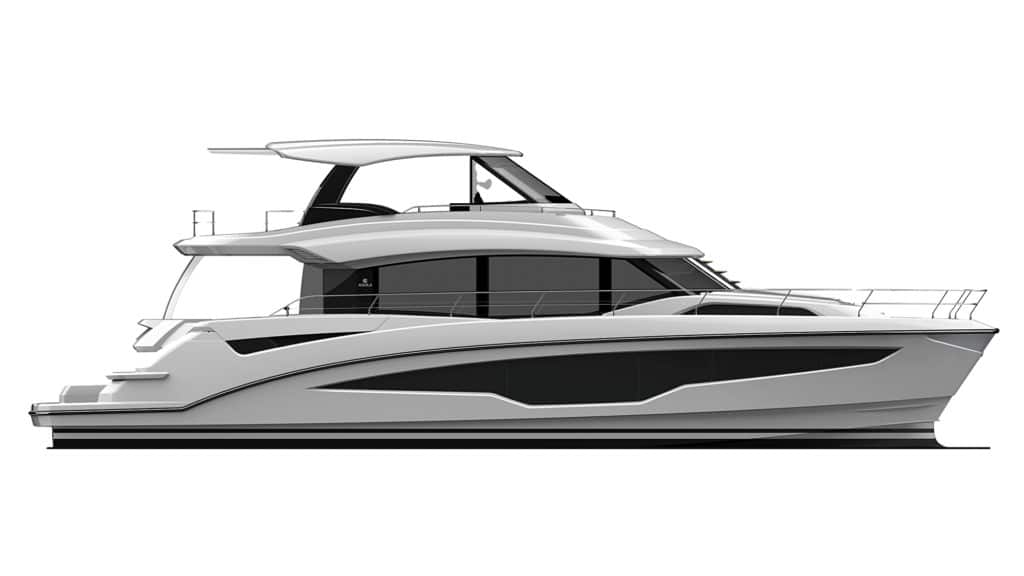
Aquila 70
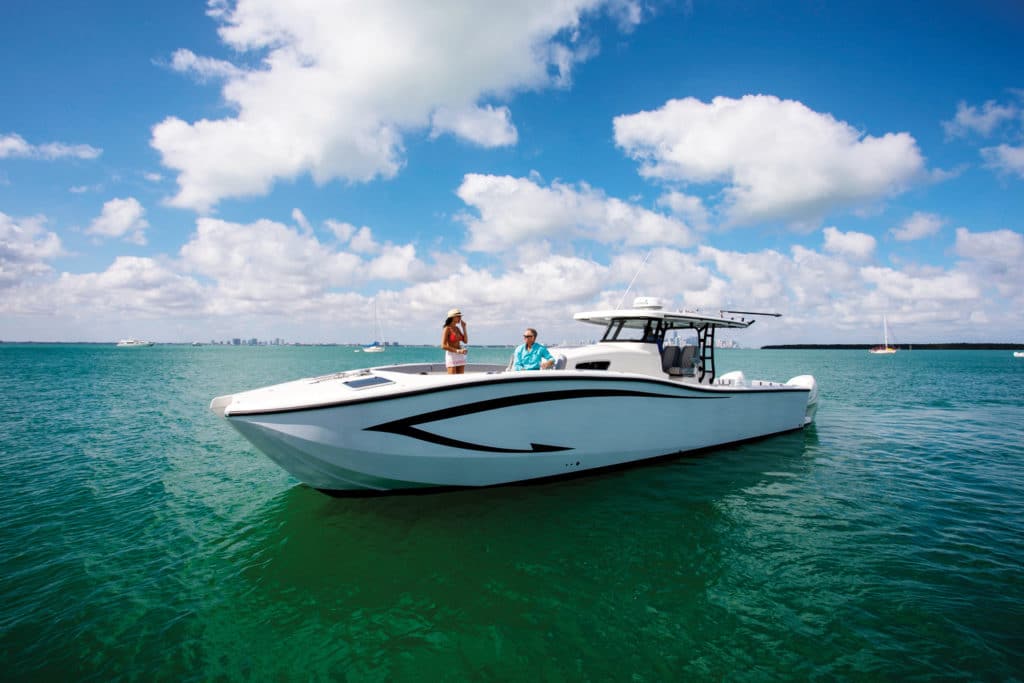
Insetta 45
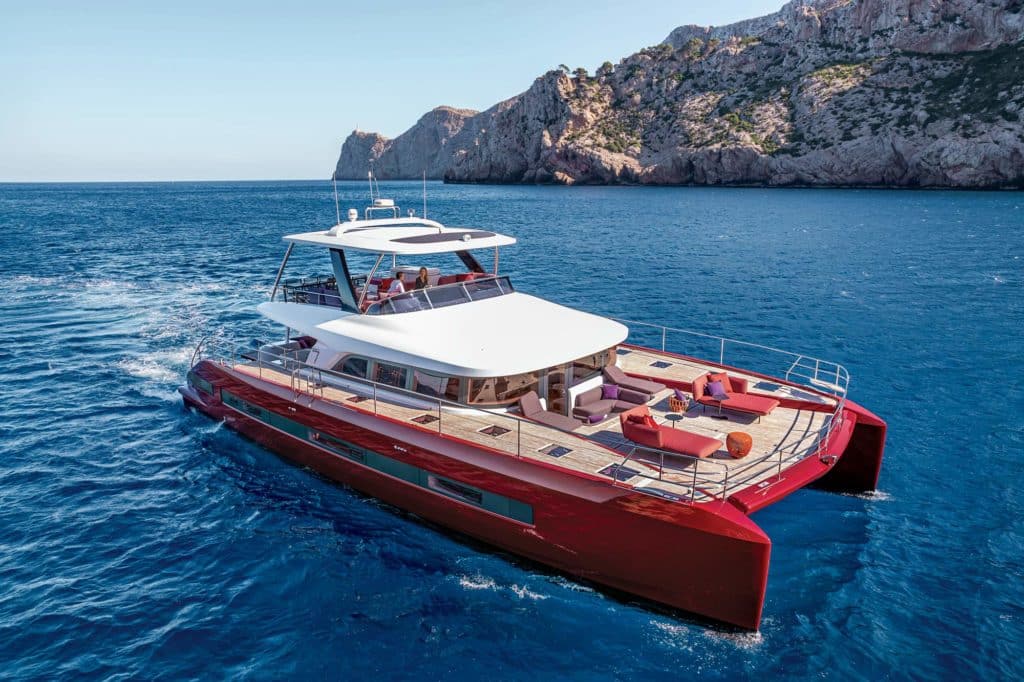
Lagoon Sixty 7
When designed for speed instead of efficiency, cats enjoy a different sort of advantage. Consider the Freeman 42LR, a quad-engine, 62-knot center-console. That boat gets close to 1 nmpg when cruising at just under 50 knots. And because the vessel has a compression tunnel—air gets compressed between the hulls at high speed, creating a cushion that softens the blows when striking waves—it can maintain that pace in conditions that would make most monohulls rather uncomfortable, to say the least.
What about those disadvantages the cat haters often point to? The unusual handling characteristics, the need for wider slips to match wider beams, the nontraditional looks and higher initial cost—sure, there are trade-offs. Then again, every vessel has some level of compromise.
So, let the pundit debates rage on. But remember: Power catamarans are just as different and distinct from one to the next as monohulls are, and smart design is the key to harnessing the advantages of the form.









